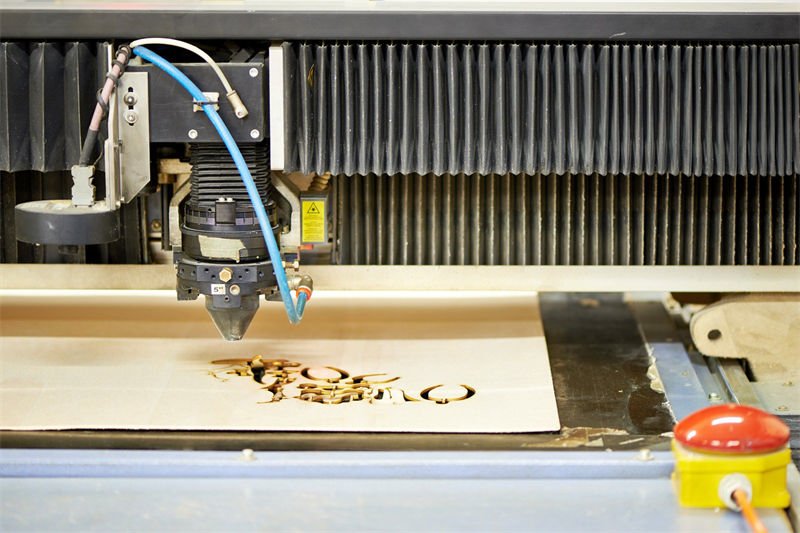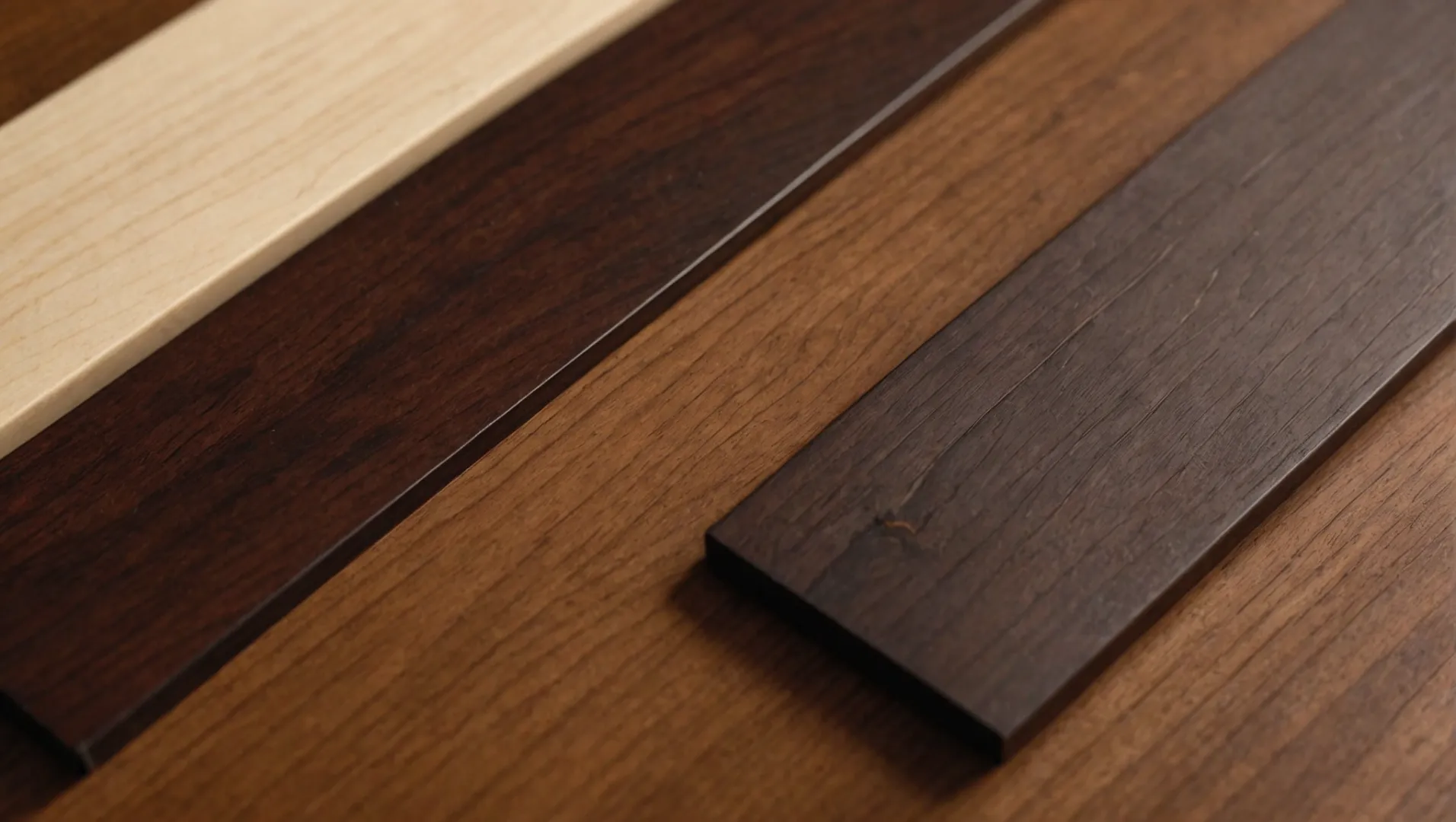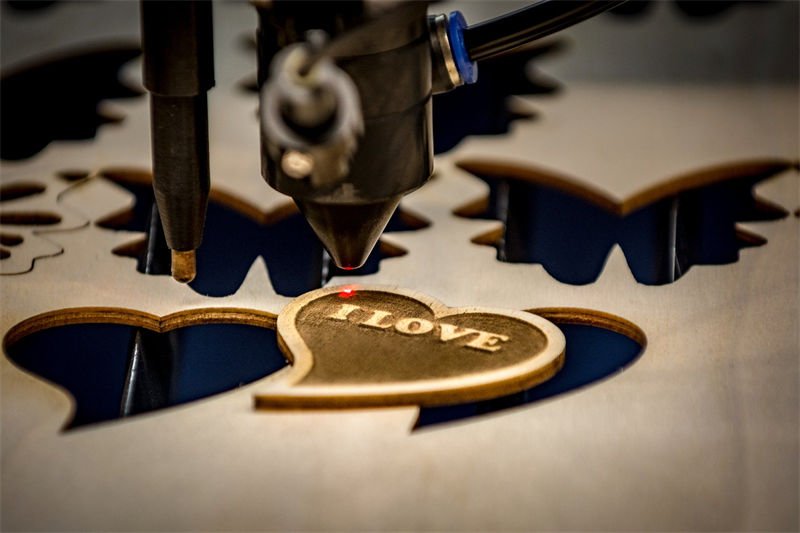
Are you ready to take your laser engraving projects to the next level? Choosing the right wood is key!
The best woods for laser engraving are typically those with a uniform grain and lighter colors, such as maple, cherry, and birch. These woods allow for clean cuts and high contrast engravings, making them ideal choices for detailed projects.
But hold on! There’s so much more to discover about each wood type that can elevate your craftsmanship. Let’s dive deeper!
Maple wood is the best for laser engraving.True
Maple's fine grain and light color make it ideal for precise engravings.
What are the Characteristics of Ideal Woods for Engraving?
The right wood can transform your engraving project from good to great. Discover the key traits that make certain woods stand out.
Ideal woods for engraving feature a fine grain, uniform texture, and low resin content. These characteristics ensure precise and high-contrast engravings, making them suitable for intricate designs.

Grain and Texture
A wood’s grain and texture play a significant role in engraving quality. Fine-grained woods like maple1 and birch have uniform patterns that allow for smooth and detailed engravings. Their tight grain helps in achieving sharp lines without the fuzziness that coarser woods might produce.
Color and Contrast
Light-colored woods, such as cherry2, naturally enhance the contrast of engraved areas. The light background against the darker engravings provides a visually striking effect. This contrast is crucial for legibility and detail, especially in complex designs.
Hardness and Density
Hardwoods are generally preferred for engraving due to their resilience and ability to hold fine details. However, too much hardness can lead to charring. Woods like alder strike a balance with moderate density, ensuring durability without compromising engraving quality.
| Wood Type | Grain | Color | Hardness |
|---|---|---|---|
| Maple | Fine | Light | Moderate |
| Cherry | Fine | Light | Moderate |
| Birch | Fine | Light | Moderate |
Resin Content
Resin can interfere with laser engraving by causing uneven burns and smoke stains. Opting for woods with low resin content, such as basswood, minimizes these issues. This ensures a cleaner finish and reduces post-engraving clean-up.
Sustainability Considerations
When choosing wood for engraving, consider sustainability. Look for options sourced from responsibly managed forests. Eco-friendly choices not only benefit the environment but also appeal to conscious consumers, adding value to your creations.
Understanding these characteristics helps in selecting the perfect wood for your next engraving project, enhancing both aesthetic appeal and quality.
Maple wood is ideal for engraving due to its fine grain.True
Maple's fine grain allows for smooth, detailed engravings.
High resin content enhances engraving quality on wood.False
High resin can cause uneven burns, reducing engraving quality.
How Does Wood Grain Affect Laser Engraving Quality?
The grain of wood can significantly influence the quality of laser engravings.
Wood grain affects laser engraving quality by influencing the level of detail, contrast, and smoothness of the engraved design. Fine and consistent grains allow for more precise and uniform engravings, while coarse grains may result in uneven textures and less clarity.

Understanding Wood Grain
Wood grain refers to the orientation, texture, and pattern of fibers found in wood. It plays a critical role in determining the aesthetic and practical outcomes of laser engraving projects. Wood with a consistent, fine grain, such as maple or birch, tends to yield smoother and more detailed engravings compared to woods with a coarse or variable grain like oak.
The Role of Grain Consistency
Consistent grain patterns contribute to uniform engraving results. Woods like maple3, known for their even grain, ensure that the laser’s energy is distributed evenly across the surface. This helps prevent irregularities in engraving depth and maintains high detail fidelity. In contrast, woods with variable grains may absorb laser energy unevenly, leading to inconsistent engraving depths.
| Wood Type | Grain Consistency | Recommended for Engraving |
|---|---|---|
| Maple | High | Yes |
| Oak | Low | No |
| Birch | High | Yes |
The Influence of Grain Direction
The direction of the wood grain also affects engraving quality. Engraving against the grain may cause feathering or rough edges, which can detract from the design’s precision. Conversely, engraving along the grain tends to produce cleaner cuts and sharper details.
Grain and Color Contrast
The color contrast between the engraved area and the surrounding wood is vital for visual clarity. Fine-grained woods often exhibit better color contrast because they provide a more uniform surface for the laser to burn, enhancing visibility and sharpness of the design. Cherry wood4 is a prime example of a wood that offers both fine grain and excellent color contrast, making it ideal for intricate engravings.
Understanding how wood grain affects laser engraving quality can significantly impact your project outcomes. By selecting woods with appropriate grain characteristics, you can achieve more precise, detailed, and visually appealing engravings.
Fine grain wood enhances laser engraving detail.True
Fine grains allow for precise and uniform engravings.
Engraving against the grain improves design precision.False
Engraving against the grain may cause rough edges.
Which Woods Offer the Best Color Contrast?
Finding the right wood with a striking color contrast can elevate your laser engraving projects to new artistic heights.
Woods like maple, cherry, and walnut offer exceptional color contrast due to their natural light and dark hues, enhancing the visual appeal of engravings.

Understanding Color Contrast in Woods
Color contrast in laser engraving is crucial for ensuring that designs stand out clearly against the wood’s natural background. This contrast is primarily influenced by the wood’s inherent color, grain pattern, and density.
-
Maple: Known for its light, creamy tone, maple provides a superb base for dark engravings. Its fine grain allows for detailed work without overshadowing the engraved design.
-
Cherry: With its rich, reddish-brown hue, cherry creates a unique contrast when engraved. Over time, cherry darkens, adding depth and character to any project.
-
Walnut: This wood is prized for its dark, chocolate-brown color, which can highlight lighter engravings beautifully. Its straight grain and smooth texture make it ideal for intricate designs.
Choosing the Right Wood for Your Project
When selecting wood for your laser engraving projects, consider the overall aesthetic you wish to achieve. Here’s a quick comparison:
| Wood Type | Natural Color | Engraving Contrast | Grain Pattern |
|---|---|---|---|
| Maple | Light Cream | High | Fine |
| Cherry | Reddish-Brown | Medium | Uniform |
| Walnut | Dark Brown | Medium-High | Straight |
Each of these woods brings a unique element to your projects, so choosing the right one depends on your design’s requirements and the desired contrast level.
Experimenting with Stains and Finishes
To enhance the natural contrast further, experimenting with different stains and finishes can be beneficial. A light stain on maple can deepen the contrast even more, while a clear finish on cherry or walnut can protect the wood and accentuate its natural beauty.
Consider testing different finishes5 on small samples before committing to a large project. This approach ensures you achieve the exact look you desire.
Maple provides the highest engraving contrast.True
Maple's light, creamy tone contrasts well with dark engravings.
Walnut is best for light-colored engravings.True
Walnut's dark brown color highlights lighter engravings beautifully.
What Tips Can Enhance Your Laser Engraving Results?
Unlock the full potential of your laser engraver with expert tips and tricks.
To enhance laser engraving results, ensure proper focus, adjust power settings according to material, and maintain a clean lens. These practices help achieve sharper, more precise engravings and extend machine lifespan.

Understanding Your Material
Each material reacts differently to laser engraving. Before starting, conduct a test run on a scrap piece to gauge how it reacts to different power settings. This helps in preventing burns or insufficient engraving.
Proper Focus and Alignment
Accurate focus is crucial. Ensure your laser head is at the correct distance from the material. Use focus tools provided by your machine’s manufacturer for best results. Misalignment can lead to blurry engravings.
Power and Speed Settings
Finding the right balance between power and speed is essential. Higher power settings may lead to deeper cuts but can cause scorching if too high. Adjust speed accordingly—faster speeds may result in lighter engravings, whereas slower speeds ensure deeper marks. Laser engraving power settings guide6 can provide more insight into ideal adjustments.
Keep Lenses Clean
Regular maintenance of your equipment is necessary. Dust and debris can accumulate on lenses, affecting the laser beam’s efficiency. Clean lenses using appropriate cleaning kits regularly to maintain precision.
Utilize Vector and Raster Settings Appropriately
Vector settings are ideal for cutting or outlining, whereas raster settings are better for intricate designs and shading. Experiment with both to understand their effects on different materials.
Leverage Software Capabilities
Advanced software settings can enhance the quality of your engravings significantly. Utilize features like dithering, which can improve image quality by reducing patterns in shaded areas.
By employing these strategies, you can significantly improve your laser engraving results. Continuous experimentation and practice will further hone your skills, allowing for more complex and detailed projects.
Proper focus ensures sharper engravings.True
Accurate focus prevents blurry engravings by maintaining the correct distance.
Higher power settings always improve engraving quality.False
Excessive power can scorch materials, reducing engraving precision.
Conclusion
Finding the right wood can transform your engraving projects into true works of art. Explore different woods and trust your instincts—each piece has a story waiting to be told.
-
Maple wood offers fine grain and light color, ideal for engraving.: It’s quite hard and resilient. It will hold a lot of detail. And it’s not hard to find so it’s not super expensive like the Japanese cherry wood … ↩
-
Cherry wood provides excellent contrast and detail for engravings.: Another great choice is Cherry wood. Its grain is beautiful and consistent, and it is low in resin. Cherry’s beautiful warm brown color will … ↩
-
Maple wood’s fine grain ensures detailed and smooth engravings.: I’ve read opinions that maple can be hard to get good results out of. It is really exceptionally hard stuff, very seasoned. Anyone have experience with it? ↩
-
Cherry wood’s fine grain enhances detail and color contrast in engravings.: Some people believe that cherry is the absolute best wood for engraving as it does provide nice contrast and is normally a very smooth grain hardwood. ↩
-
Discover finishes that enhance natural wood contrast effectively.: Check out an oil wax finish such as Osmo. Food safe, 2 coats 12 hours dry time, good lustre, natural finish. Wine, water, and ink resistant. ↩
-
Discover optimal power settings for various materials and enhance engraving quality.: I am wondering if there is a good list of recommended power and speed settings for different materials and thicknesses. Cutting 1.5mm ply. ↩



